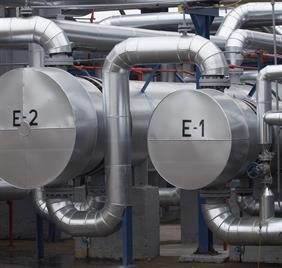Heat transfer equipment plays a crucial role in various industries, from manufacturing and energy production to food processing and HVAC systems. Choosing the right heat transfer equipment is essential for optimal performance, energy efficiency, and cost-effectiveness. With numerous options available, it can be overwhelming to determine the most suitable equipment for your industry's specific needs. In this blog, we will discuss key factors to consider when selecting heat transfer equipment for your industry.

Understand Your Industry Requirements
Start by understanding the specific requirements of your industry. Consider factors such as the desired temperature range, heat transfer capacity, fluid types, pressure limitations, and any unique conditions or regulations that apply. By gaining a clear understanding of your industry's needs, you can narrow down the options and focus on equipment that meets your specific requirements.
Evaluate Heat Transfer Methods
There are different methods of heat transfer, including conduction, convection, and radiation. Assess which method is most suitable for your application. For example, in industries that involve heating liquids or gases, heat exchangers that utilize convection-based heat transfer may be ideal. On the other hand, industries that require direct heating or cooling of surfaces may benefit from conduction-based equipment such as heat plates or heat pipes.
Consider Heat Transfer Fluids
Heat transfer fluids play a vital role in heat transfer equipment. Different fluids have varying thermal properties, temperature ranges, and compatibility with materials. Evaluate the specific requirements of your industry in terms of heat transfer fluids. Consider factors such as operating temperature, heat capacity, thermal stability, toxicity, and environmental impact. Choose a fluid that not only meets your heat transfer needs but also aligns with industry regulations and safety standards.
Size and Capacity
Determine the appropriate size and capacity of the heat transfer equipment for your industry. Consider factors such as the volume of fluid to be processed, the required heat exchange area, and the desired flow rate. Undersized equipment may result in insufficient heat transfer, while oversized equipment can lead to energy wastage and higher costs. Consult with heat transfer experts or engineers to ensure you select the right size and capacity to optimize performance and efficiency.
Energy Efficiency
Energy efficiency is a crucial consideration for industries seeking to reduce operational costs and minimize environmental impact. Look for heat transfer equipment that is designed with energy efficiency in mind. Consider features such as enhanced heat transfer surfaces, insulation, variable speed drives, and efficient fluid circulation systems. Energy-efficient equipment can help reduce utility expenses while maintaining reliable and consistent heat transfer performance.
Maintenance and Reliability
Reliability and ease of maintenance are key factors when selecting heat transfer equipment. Consider equipment that is designed for easy access, cleaning, and maintenance procedures. Look for features such as removable plates or tubes, accessible inspection points, and corrosion-resistant materials. Additionally, consider the availability of spare parts and technical support from the equipment manufacturer or supplier.
Cost and Return on Investment (ROI)
While cost is an important factor, it should not be the sole determinant in selecting heat transfer equipment. Assess the overall value and return on investment (ROI) the equipment offers. Consider factors such as energy savings, maintenance costs, durability, and expected lifespan. Investing in high-quality equipment may have a higher upfront cost but can result in long-term savings and improved operational efficiency.
Conclusion
Choosing the right heat transfer equipment is crucial for optimal performance, energy efficiency, and cost-effectiveness in your industry. Understand your industry's specific requirements, evaluate heat transfer methods, consider heat transfer fluids, and determine the appropriate size and capacity. Prioritize energy efficiency, reliability, and ease of maintenance. While cost is important, focus on the overall value and return on investment (ROI) the equipment provides. By considering these factors and consulting with industry experts, you can select the most suitable heat exchanger equipment for your industry's unique needs.

No comments yet